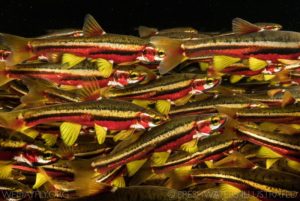Christianity and Ecological Preservation in the Southeastern United States

To view the photo-rich magazine version, click here.
Originally appears in the Spring 2021 issue.
Editor’s Note: This is the second consecutive issue in which we are running an article as part of our Finding Common Ground sub-series (though that particular heading is making its debut here). The seeds for this initiative were planted last year as we forged as partnership with Jared Goodykoontz, who is a passionate naturalist and environmental educator as well as devoted Christian. Jared sees science and his faith as complementary rather than opposing forces. This inspired us to cast our net wider to seek further connections between science and different faiths. Wouldn’t efforts to preserve biodiversity, decarbonize, and reduce plastic and toxic waste be stronger if more people were pulling in the same direction? Steven Pruitt certainly believes so, as you will read in his article. If you have found examples of common ground between science and your faith — be it Indigenous, Easter, Western, etc. — please let us know so that we can further the conversation.
By Steven Pruitt
The Southeastern United States has been blessed as one of the most biodiverse regions in the world. This abundance of natural resources was recognized early on by both the original Native American inhabitants of the region, as well as the European settlers who followed. These new settlers would bring with them a dependence on the land through agriculture and a religious system that would rival that of the more well-known and dogmatic Puritans.[1] Many skewed perceptions regarding the natural environment and humans’ role within it would unfortunately evolve in this region. This was mainly due to the dependence on agriculture as the main source of individuals’ livelihood and comfort, as well as misunderstood religious views. As human populations and industry in the South have grown exponentially in the last 60 years, so has an increased threat to these landscapes that are hotspots of biodiversity. Regardless of these changes, religion has remained a mainstay in the South. According to Pew Research Center, half of all Evangelical Protestant adults in the United States reside in the South.[2] Commonly, the perception of Christian stewardship, to both Christians and non-Christians, has been that of utilitarianism and “dominion.” These perceptions are crucial factors that determine how residents perceive their local landscapes and their level of motivation to protect them. This is why an understanding of this interaction is so imperative for environmental educators. We must better understand how the Christian faith honestly views and relates to the environment and how we can mobilize this as a call to our Christian neighbors to join us in the fight to preserve our cherished natural resources.
This content is restricted to subscribers only.
If you are not yet a subscriber, please consider taking out a subscription here.
If you are an existing subscriber, kindly log in or contact us at info@greenteacher.com for more information.





